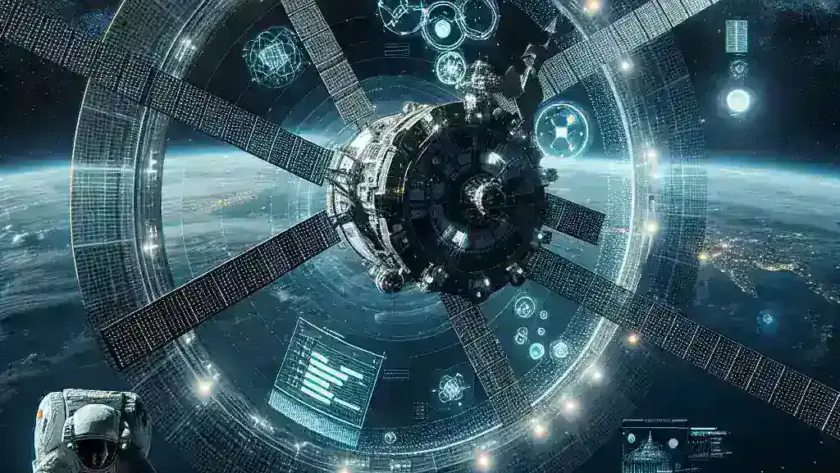Introduction
The Japan Aerospace Exploration Agency (JAXA) is taking innovative strides in the realm of space exploration by exploring the potential of artificial intelligence (AI) for optimizing life support systems on space stations. In an era where space missions are becoming increasingly complex, the integration of AI promises to revolutionize astronaut living conditions and overall mission success.
The Importance of Life Support Systems
Life support systems are vital for any sustained human presence in space. They provide essential elements such as oxygen, water, and food, while also removing carbon dioxide and other harmful substances. As missions extend beyond low Earth orbit, such as potential trips to Mars, the need for more efficient and reliable life support systems becomes paramount.
The Role of AI in Life Support Optimization
AI can significantly enhance these systems by enabling real-time monitoring and predictive analytics. By utilizing machine learning algorithms, JAXA aims to create systems that can adapt to the changing needs of astronauts, optimizing resource usage and ensuring sustainability.
Predictive Maintenance
One of the key advantages of AI in life support systems is predictive maintenance. This involves using AI algorithms to analyze data from various sensors in real-time, allowing for early detection of potential failures. This capability can drastically reduce downtime and troubleshoot issues before they escalate.
Resource Management
AI can also optimize resource management, by predicting the consumption rates of vital supplies such as water and oxygen. For instance, AI systems can analyze the daily routines and activities of astronauts to adjust the supply levels accordingly, thus minimizing waste.
Environment Control
Maintaining a stable environment is crucial for astronaut health. AI can help monitor and adjust environmental parameters such as temperature, humidity, and air quality. By employing machine learning techniques, JAXA can create a responsive system that ensures comfort and safety for astronauts.
Historical Context
The use of AI in space is not entirely new. NASA and other space agencies have incorporated various forms of AI and automation in past missions. For instance, the autonomous systems used in the Mars rovers demonstrated how AI could navigate and conduct scientific experiments independently. However, JAXA’s exploration of AI specifically for life support systems marks a significant advancement in this field.
Future Predictions
Looking ahead, the implications of AI in space exploration are vast. As JAXA continues to develop these technologies, we may see even more advanced AI systems capable of not only managing life support but also assisting in scientific research and decision-making during missions. This could pave the way for longer missions and deeper space exploration.
Pros and Cons of AI in Life Support Systems
Pros
- Increased Efficiency: AI can optimize the use of resources, leading to greater efficiency in life support systems.
- Predictive Capabilities: AI can foresee potential failures, allowing for preemptive measures to be taken.
- Enhanced Safety: By maintaining optimum environmental conditions, AI can contribute to the safety and well-being of astronauts.
- Data-Driven Decisions: AI enables the processing of vast amounts of data, leading to informed decision-making.
Cons
- Reliability Issues: AI systems can malfunction or provide incorrect predictions, which can be critical in life support scenarios.
- Complexity: The integration of AI adds layers of complexity, which may pose challenges in training and operation.
- Dependence on Technology: Over-reliance on AI could lead to a decline in human oversight and skills.
Comparisons with Traditional Systems
Traditional life support systems often rely on manual operation and fixed algorithms that do not adapt to the changing environment or needs of the crew. In contrast, AI-powered systems are dynamic and capable of learning from previous data. This adaptability can lead to a more sustainable and efficient operation, especially on long-term missions.
Real Examples of AI in Action
JAXA has already begun testing AI technologies in small-scale experiments aboard the International Space Station (ISS). For instance, AI algorithms have been used to monitor air quality and adjust system operations accordingly. Initial results have demonstrated promising outcomes, with AI enhancing the responsiveness of life support systems.
Cultural Relevance
The exploration of AI in space resonates with a global audience fascinated by the possibilities of technology. As countries collaborate on space exploration, such advancements promote international cooperation and inspire future generations to pursue careers in STEM fields.
Conclusion
As JAXA delves deeper into the integration of AI for optimizing life support on space stations, the future of human space exploration looks promising. With the potential to significantly enhance the efficiency, safety, and sustainability of life support systems, AI stands at the forefront of technological innovation in space. This journey not only reflects human ingenuity but also opens new frontiers for exploration, ultimately paving the way for humanity’s future in the cosmos.

